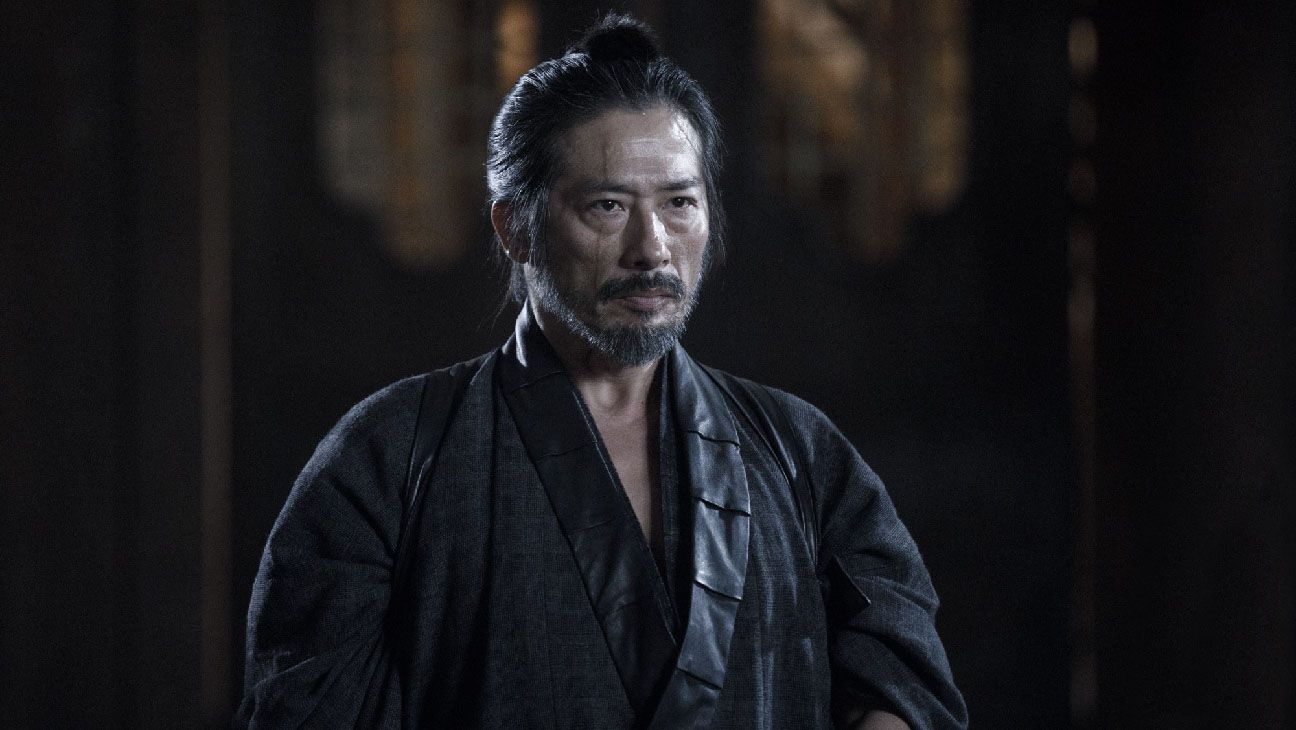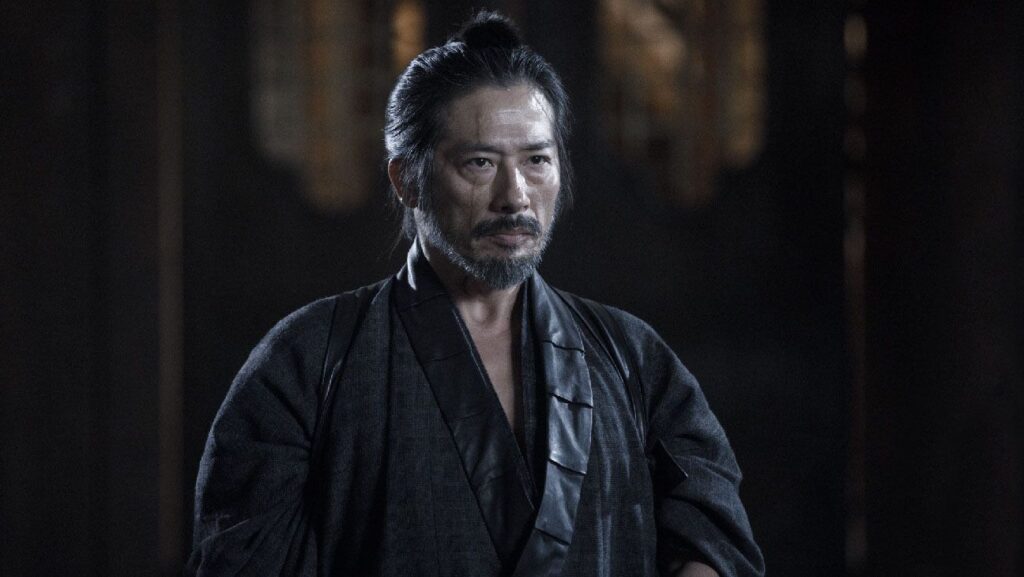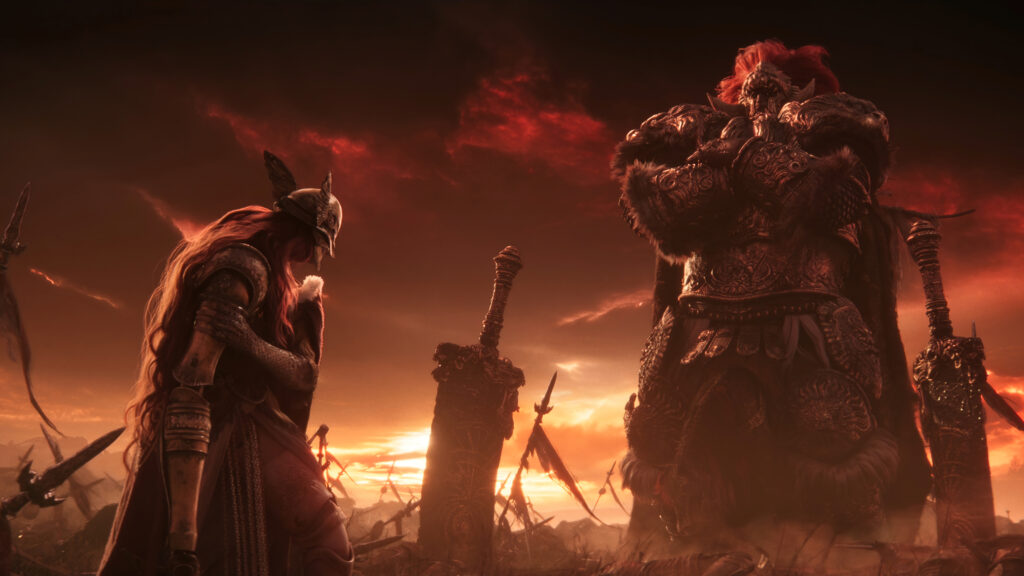Diving Deep into “Shogun”: An In-Depth Analysis
Introduction
In the vast and expansive realm of television programming, where narratives traverse an array of genres and epochs, FX’s latest venture, “Shogun,” emerges as a captivating odyssey into a pivotal juncture in history. Against the backdrop of feudal Japan during the early 17th century, the series beckons viewers into a realm teeming with political intrigue, cultural crosscurrents, and the enduring legacy of intercultural dialogue. Drawing inspiration from the sweeping saga penned by James Clavell and grounded in historical authenticity, “Shogun” masterfully weaves together a rich tapestry of storytelling, seamlessly blending the echoes of a bygone era with a contemporary narrative sensibility. In this expansive and comprehensive analysis, we embark on a profound journey through the labyrinthine depths of “Shogun,” meticulously unraveling its historical roots, tracing its metamorphosis from page to screen, and probing the broader reverberations of its narrative landscape on our nuanced understanding of East-West relations.
I. Setting the Stage: Feudal Japan in the Early 17th Century
A. Historical Context
In the intricate tapestry of feudal Japan’s socio-political landscape during the early 17th century, “Shogun” unfolds against a backdrop of profound significance. Amidst the turmoil of divergent ambitions and the clash of mighty warlords, the series weaves together history, culture, and human drama into a mesmerizing tableau.
Feudal Japan is a realm in flux, where the influence of powerful daimyo extends across the archipelago, each vying for supremacy in a ceaseless struggle for dominion. The legacy of the Warring States Period, marked by relentless conflict and territorial expansion, leaves Japan fragmented and divided. Yet, amidst the chaos, Tokugawa Ieyasu emerges as a singular figure, determined to reshape the destiny of the nation.
For Ieyasu, the path to power is fraught with peril as he navigates treacherous waters of feudal politics with unwavering determination. Behind the facade of strength lies a man haunted by his past, driven by an obsession to unite Japan and usher in a new era of peace and prosperity.
“Shogun” offers viewers a window into this world of transformation, immersing them in the vibrant portrayal of feudal Japan where honor, loyalty, and duty reign supreme. Through meticulous attention to detail and nuanced character development, the series brings history to life, inviting viewers on a journey of discovery.
As the narrative delves into feudal politics, cultural exchange, and the human experience, it resonates with timeless themes and universal truths. Amidst the chaos, bonds are forged, alliances tested, and the fate of nations hangs in the balance. Yet, there is also beauty in the resilience of the human spirit, the power of hope, and the quest for redemption.
“Shogun” transcends mere entertainment, offering a journey of discovery and enlightenment. Through its masterful blend of history, drama, and spectacle, it invites viewers to embark on an epic adventure through the annals of Japanese history, where every twist and turn reveals new depths of meaning and every character reflects the human condition.
B. East-West Relations
During this transformative period in Japanese history, the arrival of Europeans introduced a dynamic element that added layers of complexity to the already intricate political landscape. Portuguese and Dutch traders, accompanied by Jesuit missionaries, ventured into the insular island nation, bringing with them not just goods but also foreign ideas, technology, and religion. This influx of external influences marked the beginning of a significant cultural exchange that would shape Japan’s future.
Among these foreigners stands William Adams, an English navigator whose arrival on Japanese shores would catalyze a series of events with far-reaching consequences. Adams’s encounter with Tokugawa Ieyasu, the central figure in “Shogun,” serves as a pivotal narrative thread, weaving together themes of cultural encounter, diplomacy, and personal ambition.
Adams’s presence symbolizes the dawn of a new era in Japanese history, characterized by the opening of doors to the outside world and the exchange of knowledge and technology. His unique perspective as a navigator offers Ieyasu, the ambitious warlord seeking to consolidate his power, a tantalizing glimpse into the vast expanse beyond Japan’s shores. This encounter sparks curiosity and intrigue in Ieyasu, prompting him to explore the possibilities of forging connections with distant lands and leveraging their resources for his own ambitions.
As Adams and Ieyasu navigate the complexities of their newfound relationship, they find themselves embroiled in a web of political intrigue, personal ambition, and cultural exchange. Adams’s knowledge and skills become valuable assets to Ieyasu, earning him a place of trust and influence in the warlord’s inner circle. Yet, amidst the alliances and betrayals that characterize feudal politics, Adams must navigate carefully to safeguard his own interests and secure his place in this unfamiliar and often hostile environment.
Through the lens of Adams’s experiences, “Shogun” explores the tensions and opportunities that arise when cultures collide and individuals navigate the currents of change. His journey serves as a microcosm of the broader historical forces at play, highlighting the challenges and complexities of cultural exchange in a world in flux. As the series unfolds, viewers are invited to contemplate the significance of these encounters and their lasting impact on the course of history.
II. From Page to Screen: The Adaptation of “Shogun”
A. James Clavell’s Novel
At the heart of “Shogun” lies James Clavell’s epic novel, a masterful work of historical fiction that serves as the foundation upon which the miniseries is built. Clavell’s meticulous attention to detail and immersive storytelling techniques combine to create a rich and vibrant tapestry of characters and events set against the backdrop of feudal Japan.
Central to Clavell’s narrative is the character of John Blackthorne, an English sailor whose journey mirrors that of the historical figure William Adams. Through Blackthorne’s eyes, readers are transported to a world of political intrigue, cultural clash, and personal discovery. As he navigates the complex social hierarchy and unfamiliar customs of feudal Japan, Blackthorne grapples with questions of honor, loyalty, and cultural identity, providing readers with a window into the complexities of life in a society vastly different from his own.
Clavell’s extensive research into the historical period shines through in his vivid and evocative descriptions, bringing the sights, sounds, and smells of 17th-century Japan to life on the page. From bustling marketplaces to tranquil tea ceremonies, Clavell captures the essence of Japanese culture with an authenticity that resonates with readers.
In addition to its richly drawn characters and immersive setting, “Shogun” explores timeless themes that continue to resonate with readers today. Questions of identity, belonging, and the nature of power are woven throughout the narrative, inviting readers to reflect on their own values and beliefs in the context of Blackthorne’s journey.
Ultimately, Clavell’s novel serves as a captivating exploration of a pivotal moment in history, offering readers a glimpse into a world of adventure, intrigue, and cultural exchange. As the cornerstone of the “Shogun” miniseries, Clavell’s work continues to captivate audiences with its timeless themes and compelling storytelling, reminding us of the enduring power of literature to transport us to new worlds and illuminate the human experience.
B. Bringing “Shogun” to Life
Adapting James Clavell’s expansive novel into a television miniseries posed a significant challenge for the creators behind FX’s production of “Shogun.” Every step of the production process, from initial development to casting decisions and the visual presentation, was meticulously orchestrated to honor the essence of Clavell’s work while offering a fresh perspective tailored to contemporary audiences.
One of the most critical aspects of the adaptation was the casting process, where careful consideration was given to selecting actors who could embody the essence of key characters like John Blackthorne, Tokugawa Ieyasu, and Mariko. Each actor was chosen not only for their ability to bring the characters to life but also for their understanding of the intricate dynamics at play within Clavell’s narrative.
Furthermore, attention to visual detail played a pivotal role in immersing viewers in the world of feudal Japan. Through meticulous cinematography, costume design, and set production, the series transports audiences back in time, evoking a sense of authenticity and grandeur that captures the essence of Clavell’s vision. From sweeping landscapes to intricately designed interiors, every visual element is carefully crafted to enhance the storytelling experience and transport viewers to a bygone era.
By striking a delicate balance between faithfulness to Clavell’s source material and creative innovation, the creators of the FX miniseries have succeeded in bringing “Shogun” to life in a way that is both reverent to the original novel and captivating for modern audiences. Through their careful attention to detail and commitment to authenticity, they have crafted a visual masterpiece that pays homage to Clavell’s enduring legacy while offering a fresh and compelling interpretation for a new generation of viewers.
III. Exploring Themes and Characters in “Shogun”
A. Character Analysis
“Shogun” stands as a testament to the power of its characters, each meticulously crafted to embody the complexities of life in feudal Japan. At the forefront of this narrative tapestry is John Blackthorne, whose journey from outsider to insider serves as a compelling exploration of the human spirit’s resilience amidst the tumult of unfamiliar shores. As he grapples with the intricacies of feudal Japanese society, Blackthorne’s evolution resonates with audiences, offering a poignant reminder of the transformative power of adaptation in the face of adversity.
In contrast, Lord Yoshi Toranaga, the fictionalized depiction of Tokugawa Ieyasu, emerges as a masterful manipulator and strategist, navigating the treacherous waters of political intrigue with calculated precision. His intricate dance of alliances and betrayals underscores the high-stakes game of power and survival that defines the world of “Shogun.” Through Toranaga’s interactions with Blackthorne, viewers gain insight into the delicate balance of trust and deception that shapes the fate of nations and individuals alike.
Meanwhile, Mariko, a Japanese noblewoman, defies societal conventions and expectations, carving out her own path in a male-dominated world. Her complex relationship with Blackthorne serves as a poignant exploration of themes such as cultural identity, belonging, and the forbidden nature of love. As Mariko navigates the intricate web of social dynamics, her journey serves as a testament to the resilience of the human spirit in the face of adversity and oppression.
Together, these characters form the beating heart of “Shogun,” each contributing to a narrative tapestry that weaves together themes of power, politics, and personal transformation. Through their struggles and triumphs, viewers are invited to embark on a journey of discovery, exploring the depths of the human experience against the backdrop of feudal Japan’s turbulent history.
B. Themes of Power and Politics
“Intrigue and Betrayal,” “Ambition and Leadership,” and “Diplomacy and Warfare” serve as the thematic pillars that underpin the narrative tapestry of “Shogun,” intertwining to shape the destiny of feudal Japan and its inhabitants.
At the core of “Shogun” lies a labyrinth of intrigue and betrayal, where alliances are forged and shattered with the stroke of a pen or the swing of a sword. The complex webs of allegiance that bind the characters together are constantly tested by the shifting sands of political ambition and personal vendettas. As loyalties are questioned and secrets are unearthed, the true nature of trust and betrayal is laid bare, revealing the fragile threads that hold the fabric of society together.
Against this backdrop of political machinations, the competing ambitions of key characters come to the fore, driving them to extraordinary lengths in their quest for power and prestige. Whether vying for control of the shogunate or seeking to carve out their own fiefdoms, the protagonists of “Shogun” are driven by a relentless pursuit of greatness, heedless of the consequences that may await them. Yet, in their single-minded determination, they risk losing sight of the very values they seek to uphold, blurring the lines between heroism and villainy in the process.
Amidst the chaos of feudal Japan’s shifting allegiances and power struggles, the delicate dance of diplomacy and warfare plays out on the grand stage of history. Diplomatic maneuvers are executed with the precision of a master strategist, while military conflicts erupt with a ferocity that echoes across the ages. From the blood-soaked battlefields of Sekigahara to the hushed corridors of power in Edo Castle, the fate of nations hangs in the balance, determined by the interplay of swords and words alike.
In “Shogun,” these themes converge to form a tapestry of unparalleled depth and complexity, offering viewers a window into a world of political intrigue, ambition, and conflict. As the narrative unfolds, the intricacies of feudal Japan’s social dynamics are laid bare, revealing the true cost of power and the sacrifices required to attain it. Through the lens of history, audiences are invited to ponder the timeless questions of loyalty, ambition, and honor that continue to shape the course of human events to this day.
IV. Impact and Reception of “Shogun”
A. Critical Reception
Reviews and Commentary: A comprehensive analysis of the critical responses to the FX series “Shogun” reveals a spectrum of opinions that underscore its multifaceted nature. Critics and viewers alike have been captivated by the series’ ability to transport them to the tumultuous world of feudal Japan while also sparking thoughtful discussions about its historical accuracy and cultural significance.
Many reviewers have lauded the series for its meticulous attention to detail and immersive storytelling, praising its ability to bring to life the rich tapestry of characters and events depicted in James Clavell’s novel. The visual aesthetics, including the stunning cinematography and elaborate costume design, have been particularly praised for their authenticity and ability to evoke the atmosphere of feudal Japan.
At the same time, however, some critics have raised concerns about the series’ historical accuracy, pointing to discrepancies between the events depicted on screen and the historical record. While adaptations inevitably take creative liberties in order to streamline the narrative and appeal to a modern audience, some viewers have expressed frustration with what they perceive as an oversimplification or distortion of historical events.
Comparisons to the original novel and previous adaptations have also been a subject of debate among critics. While some have praised the series for its faithfulness to Clavell’s vision and its ability to capture the essence of his novel, others have criticized it for deviating too far from the source material or failing to adequately explore certain themes and characters.
Despite these criticisms, the series’ ability to captivate audiences and spark discussions about its historical accuracy and cultural significance is a testament to its enduring impact. By shedding light on a pivotal moment in history and exploring themes of cultural exchange, power, and identity, “Shogun” has left an indelible mark on the landscape of television programming, inspiring viewers to delve deeper into the complexities of the past and engage with the broader implications of its narrative.
B. Legacy and Influence
“Shogun” stands as a monumental work that not only entertains but also educates, offering viewers a gateway to a captivating era in Japanese history. Despite its fictionalized elements, the series serves as a beacon illuminating pivotal events such as the Battle of Sekigahara in 1600, a turning point that shaped the course of Japan’s future. Through the lens of characters like William Adams, whose real-life contributions to cultural exchange echo through the annals of time, “Shogun” provides a window into the intricate tapestry of cross-cultural interactions that defined this period.
The Battle of Sekigahara, a climactic clash of warlords vying for supremacy, serves as a linchpin in “Shogun’s” narrative, encapsulating the tumultuous struggle for power that characterized feudal Japan. While the series may take liberties in its depiction of this historic event, its portrayal nonetheless highlights the significance of Sekigahara in heralding the dawn of the Tokugawa Shogunate, a period of stability and isolationism that endured for over two centuries.
William Adams, known in Japan as Miura Anjin, emerges as a central figure in both the series and historical records, embodying the spirit of cultural exchange and cooperation between Japan and the West. His role as a trusted advisor to Tokugawa Ieyasu and his contributions to the construction of Japan’s first Western-style ships underscore the profound impact of his presence on Japanese society. Through his interactions with Japanese and European characters alike, Adams serves as a conduit for the exchange of ideas, technology, and knowledge that ultimately bridges the gap between two worlds.
Beyond the realm of politics and warfare, “Shogun” delves into the intricacies of daily life in feudal Japan, offering glimpses into the customs, traditions, and social dynamics of the time. From the opulent court of the daimyo to the humble fishing villages along the coast, the series paints a vivid portrait of a society in flux, grappling with the winds of change blowing from both within and without.
In conclusion, while “Shogun” may be a work of fiction, its impact on our understanding of Japanese history and culture is undeniable. By blending historical events with compelling storytelling and memorable characters, the series transcends the boundaries of entertainment, leaving a lasting legacy that continues to resonate with audiences around the world. As we reflect on the lessons learned from “Shogun,” we are reminded of the enduring power of storytelling to illuminate the past, inspire the present, and shape the future.
Conclusion
In conclusion, FX’s “Shogun” stands as a towering achievement in the realm of television, offering a multifaceted exploration of history, adaptation, and cultural encounter that defies the conventions of traditional programming. Through its masterful storytelling, meticulous attention to detail, and nuanced portrayal of characters and themes, the series beckons viewers to immerse themselves in the tumultuous corridors of power and intrigue that define feudal Japan.
As audiences become enraptured by the unfolding narrative of “Shogun,” they are not merely passive spectators but active participants in a journey of discovery. Each episode serves as a gateway to a bygone era, where the clash of cultures and the machinations of politics shape the destiny of nations. In delving deep into the intricacies of the series, viewers are afforded the opportunity to reflect on broader themes of identity, belonging, and the enduring legacy of cross-cultural exchange.
Moreover, “Shogun” serves as a poignant reminder of the timeless power of storytelling to transcend boundaries and bridge divides. As viewers from diverse backgrounds engage with the series, they are united by a shared appreciation for the art of narrative and its capacity to illuminate the human experience. Whether sparking conversations about history, cultural representation, or the nature of power, “Shogun” inspires dialogue that reverberates across cultures and generations.
In essence, FX’s “Shogun” is more than just a television series; it is a testament to the enduring allure of storytelling and its ability to provoke thought, evoke emotion, and foster understanding. As viewers bid farewell to the world of feudal Japan, they carry with them the lessons learned and the insights gained from their journey. And in doing so, they become not just viewers but custodians of a legacy that will endure for generations to come.
Take a look at other content related to “Shogun” from here.
Explore our other articles from here.




